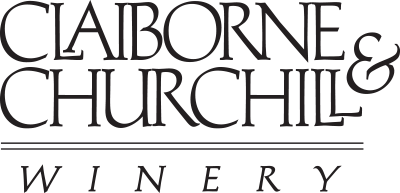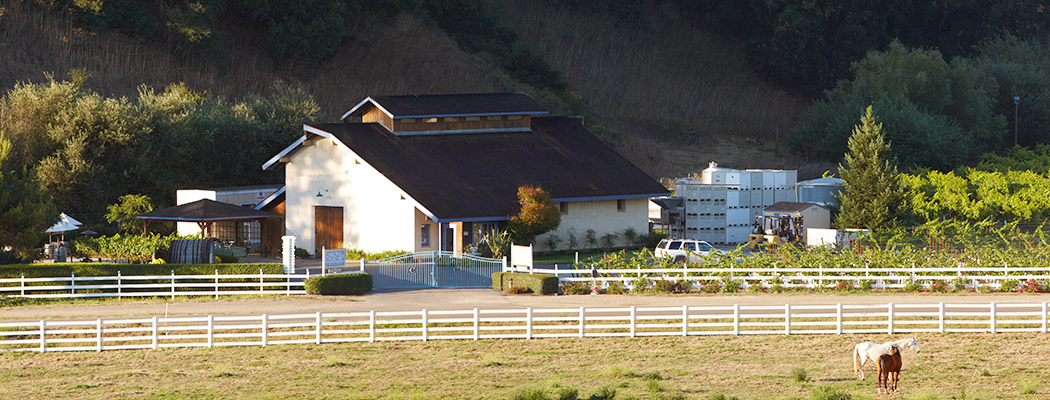Ocean Grown
February 4, 2015
Krista Minard
Between the mountains and the beach, the relaxed little wine country in San Luis Obispo rolls out a warm welcome.
On the deck at The Casitas Estate, the breeze curls in from the ocean, whitecapping the water in the lap pool and flapping the umbrella over the table. It’s too early for sunbathing—give it another month or so—but the sun splashes between fluffs of almost-spring clouds and sparkles off the glass of wine in your hand. Look—over here, the fog-clogged coast. Down there, the Arroyo Grande Valley; just behind, the Edna Valley. In these picturesque furrows between the Santa Lucia mountain range and the accompanying hillsides, grapes grow stressed all season long, challenged by wind and heat and sun and chill and soil that changes with practically every hillside.
Halfway between Los Angeles and San Francisco, San Luis Obispo might be known more for its California Polytechnic university than anything else, but it’s also a quietly phenomenal food-and-wine destination. This wine country is as friendly as it is beautiful, an agrarian world of rural roads and deep-blue sky, where vintners share rather than compete and tasting room visitors are welcomed with warm smiles and flights proudly poured. You’ll find a pinot noir on almost every wine-tasting counter here, although some 20-plus varieties of wine come out of this region.
Just listen to Mike Sinor, board president of the SLO Wine Country association and director of winemaking at Ancient Peaks Winery, and you get a sense of the community. “There’s the small-town vibe and so much camaraderie,” says Sinor, who acquired Bassi Ranch Vineyard in 2013 and makes artisan wines under his own Sinor-LaVallee label. “We’re farmers. Everyone shares.”
Do a winery hop, and you discover he’s right. Sinor might make wine for Ancient Peaks and grow his own grapes for his label, but he’ll send visitors to Tolosa winery for chardonnay or to Kynsi Winery for a certain pinot noir from a specific block of a certain vineyard (Estate Stone Corral, actually) that takes its name from the original Spanish land grant for much of the Edna Valley. Sinor knows his stuff, and he knows his neighbors. He tilts glasses with them regularly and tells stories that go back decades. Similarly, Brian Talley of Talley Vineyards/Talley Farms will happily speak highly of wines from Laetitia or Chamisal wineries—as he sits sampling with yet another winery’s winemakers—and so forth. The people in the SLO wine industry, from the winemakers to vineyard owners to Cal Poly viticulture interns, all speak of information shares, idea swaps and equipment trades, and whenever more than one SLO wine geek turns up in the same room, they talk grapes, soil, wind, harvest. When asked if awards erupt jealousy, they laugh and shake their heads. “There’s plenty to go around,” says Jac Jacobs, winemaker for Kelsey See Canyon Vineyards. “This is a lifestyle, not a competition.”
WHERE TO DRINK
Two official American Viticultural Areas exist under the umbrella of SLO Wine Country—Edna Valley and Arroyo Grande Valley—but a number of the association’s 29 member wineries fall outside the AVAs as well. The majority of the region’s vineyards are SIP-certified, which means they follow Sustainability in Practice methods of grape growing.
Visit Independence Schoolhouse (where six wineries pour in a quaint yellow schoolhouse), Chamisal Vineyards(just pinot noir and chardonnay), Tolosa (a solar-powered operation) or Saucelito Canyon (the 1880 zinfandel!). At Claiborne & Churchill, Alsatian-style wines dominate the flight: dry riesling, gewurztraminer and pinot gris. The tall, green flute bottles will feel especially festive on a table full of olives, peppers, cheeses and charcuterie. If you’re staying at the Biddle Ranch vacation house, stop over at the Biddle Ranch tasting room near Avila Beach to try the chardonnay that comes from the grapes outside your windows. At Kynsi, owner/winemakers Don and Gwen Othman create not only wine but wine equipment; Don is famous in vinicultural circles for his design of the Bulldog Pup, a gas-pressure racking wand that transfers delicate pinot noir from barrels without disturbance and has become a wine industry standard. While visiting Kynsi, ask to hear the owl story. (Teaser: “Kynsi” means “talon” in Finnish, the Othmans’ heritage, and barn owls have proven indispensable in keeping their vineyards’ gopher populations down.) At Laetitia, vineyard pests are kept under control with ravenous goats to gobble weeds and peregrine falcons to bully off those pesky grape-loving starlings. Sip champagne while you watch for Laeticia’s charging falcon. At Talley Vineyards, sit at shady outdoor tables adobe, built in the 1860s. It used to house the tasting room, and it still adorns the Talley wine labels. Across Highway 101, Kelsey See Canyon Vineyards sits in an apple orchard on the edge of See Canyon Creek, and some 130 peacocks roam the property, often in full fan. Make sure to try the hard apple cider and the Golden Delicious, a combination cider/wine.
« Back to News
